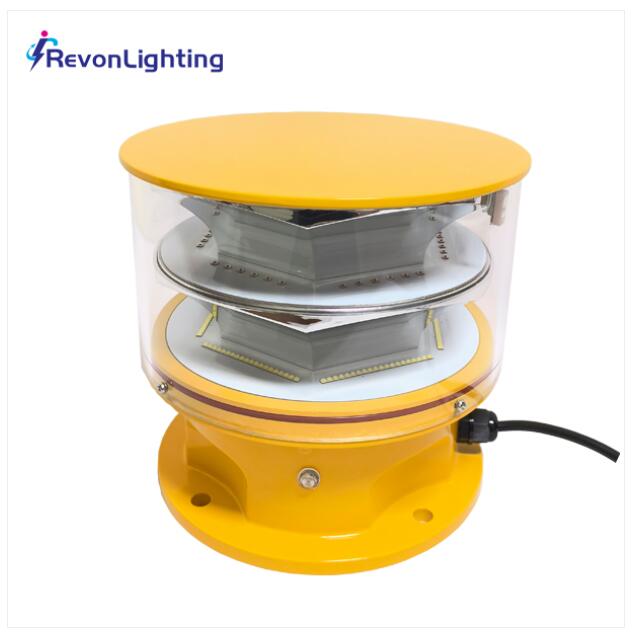Aviation plays a crucial role in global transportation, connecting distant parts of the world and facilitating commerce, tourism, and cultural exchange. Ensuring the safety of aircraft during their operations, especially in areas close to obstacles such as tall buildings, towers, and natural formations, is paramount. This is where aviation obstruction lights and aviation lights come into play. These lights are essential for preventing accidents by making obstructions visible to pilots and marking aircraft to avoid collisions. This article explores the importance, types, and technological advancements in aviation obstruction lights and aviation lights.
The Role of Aviation Obstruction Lights
Aviation obstruction lights are installed on tall structures like buildings, communication towers, wind turbines, and cranes to alert pilots about potential hazards. The primary purpose of these lights is to make obstructions visible, especially during low visibility conditions such as night, fog, or heavy rain. By marking these obstacles, aviation obstruction lights help in reducing the risk of accidents and ensuring the safe navigation of aircraft.
Types of Aviation Obstruction Lights
Low-Intensity Lights: These are typically used for structures that are less than 45 meters (150 feet) in height. They emit a steady or flashing red light, visible from a distance of 3 nautical miles. Low-intensity lights are sufficient for smaller obstructions that do not pose a significant threat to aviation safety.
Medium-Intensity Lights: These lights are used for structures ranging from 45 meters to 150 meters (150 feet to 500 feet). They emit either a red or white light, with red being used during the night and white during the day. Medium-intensity lights are visible from up to 10 nautical miles, providing a clear warning to pilots.
High-Intensity Lights: High-intensity lights are reserved for very tall structures, exceeding 150 meters (500 feet). They emit a white light that is visible from up to 20 nautical miles. These lights are essential for tall buildings, broadcasting towers, and other significant obstructions that could pose a severe risk to aviation.
The Role of Aviation Lights
Aviation lights refer to the lighting systems used on aircraft to enhance their visibility to other aircraft and ground personnel. These lights are crucial for collision avoidance, communication, and ensuring operational safety during takeoff, landing, and flight.
Types of Aviation Lights
Navigation Lights: Also known as position lights, these are mounted on the wingtips and tail of an aircraft. They include a red light on the left wingtip, a green light on the right wingtip, and a white light on the tail. Navigation lights help pilots determine the orientation and direction of other aircraft, thereby preventing mid-air collisions.
Anti-Collision Lights: These include strobe lights and beacon lights. Strobe lights are high-intensity white lights located on the wingtips and are used to increase the aircraft's visibility during flight. Beacon lights are red flashing lights mounted on the top and bottom of the fuselage, used to indicate that the aircraft's engines are running.
Landing Lights: These are high-intensity lights mounted on the aircraft's landing gear or wings. They illuminate the runway during takeoff and landing, aiding pilots in visually identifying the runway and taxiways. Landing lights also help ground personnel spot the aircraft during low visibility conditions.
Taxi Lights: These are mounted on the nose gear or the wings, providing illumination for taxiing on the ground. Taxi lights help pilots navigate the taxiways and avoid obstacles on the ground.
Technological Advancements in Aviation Lighting
Advancements in technology have significantly improved the effectiveness and efficiency of both aviation obstruction lights and aviation lights. LED technology, in particular, has revolutionized the industry by offering numerous benefits over traditional incandescent lighting.

Benefits of LED Technology
Energy Efficiency: LED lights consume significantly less energy compared to traditional lights, resulting in lower operational costs and reduced environmental impact.
Longer Lifespan: LEDs have a much longer operational life, reducing the frequency of replacements and maintenance costs. This is particularly beneficial for aviation obstruction lights, which are often installed in hard-to-reach locations.
Enhanced Visibility: LED lights offer brighter and more consistent illumination, improving visibility for pilots and enhancing safety.
Durability: LEDs are more resistant to shock and vibration, making them ideal for use in the harsh conditions experienced by aircraft and tall structures.
Smart Lighting Systems

The integration of smart technologies has further enhanced aviation lighting systems. Smart lighting systems can be remotely monitored and controlled, allowing for real-time adjustments based on changing conditions. For example, the intensity of aviation obstruction lights can be automatically adjusted based on ambient light conditions, ensuring optimal visibility while minimizing light pollution.

Solar-Powered Lighting
Solar-powered aviation lights are becoming increasingly popular, particularly in remote areas where access to electrical infrastructure is limited. Solar-powered lights are equipped with photovoltaic panels that convert sunlight into electrical energy, which is stored in batteries for use during nighttime. These lights offer a sustainable and cost-effective solution for aviation safety.
Regulatory Standards and Compliance
Both aviation obstruction lights and aviation lights must adhere to strict regulatory standards set by aviation authorities to ensure their effectiveness and reliability. In the United States, the Federal Aviation Administration (FAA) provides guidelines and specifications for the installation and maintenance of these lights. Similarly, the International Civil Aviation Organization (ICAO) sets global standards that are followed by member countries.
| Aviation Obstruction Lights | Aviation Lights |
| Aviation Obstruction Light | Aviation Light |
Compliance with these standards is essential to maintain uniformity and ensure that all aviation lighting systems provide the required level of safety. Regular inspections and maintenance are also mandated to ensure that the lights remain functional and effective.
Conclusion
Aviation obstruction lights and aviation lights are critical components of the aviation safety infrastructure. They play a vital role in preventing accidents, enhancing visibility, and ensuring the safe navigation of aircraft. Technological advancements, particularly in LED and smart lighting systems, have significantly improved the performance and efficiency of these lights. Adherence to regulatory standards and continuous innovation will further enhance aviation safety, making the skies safer for all.